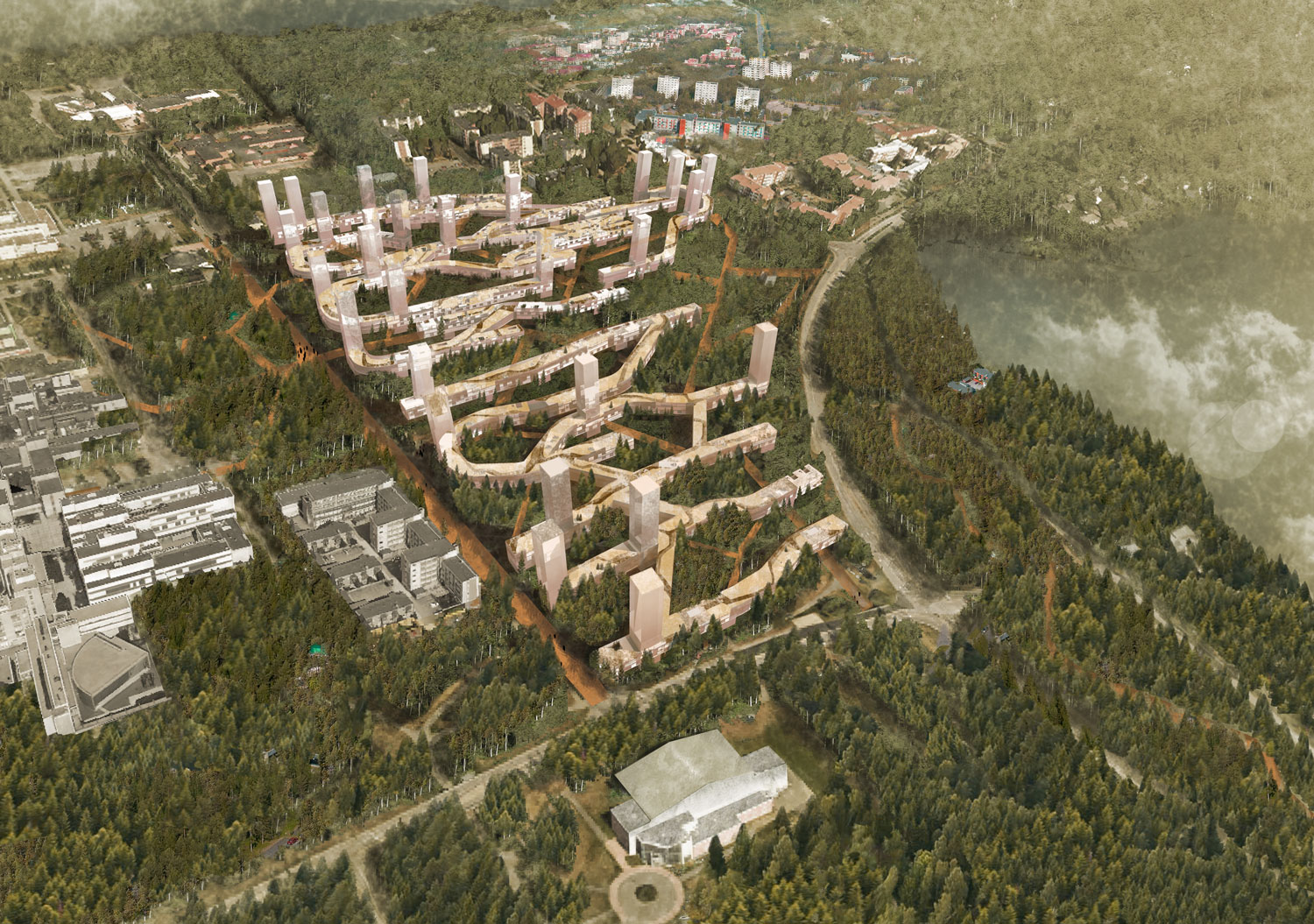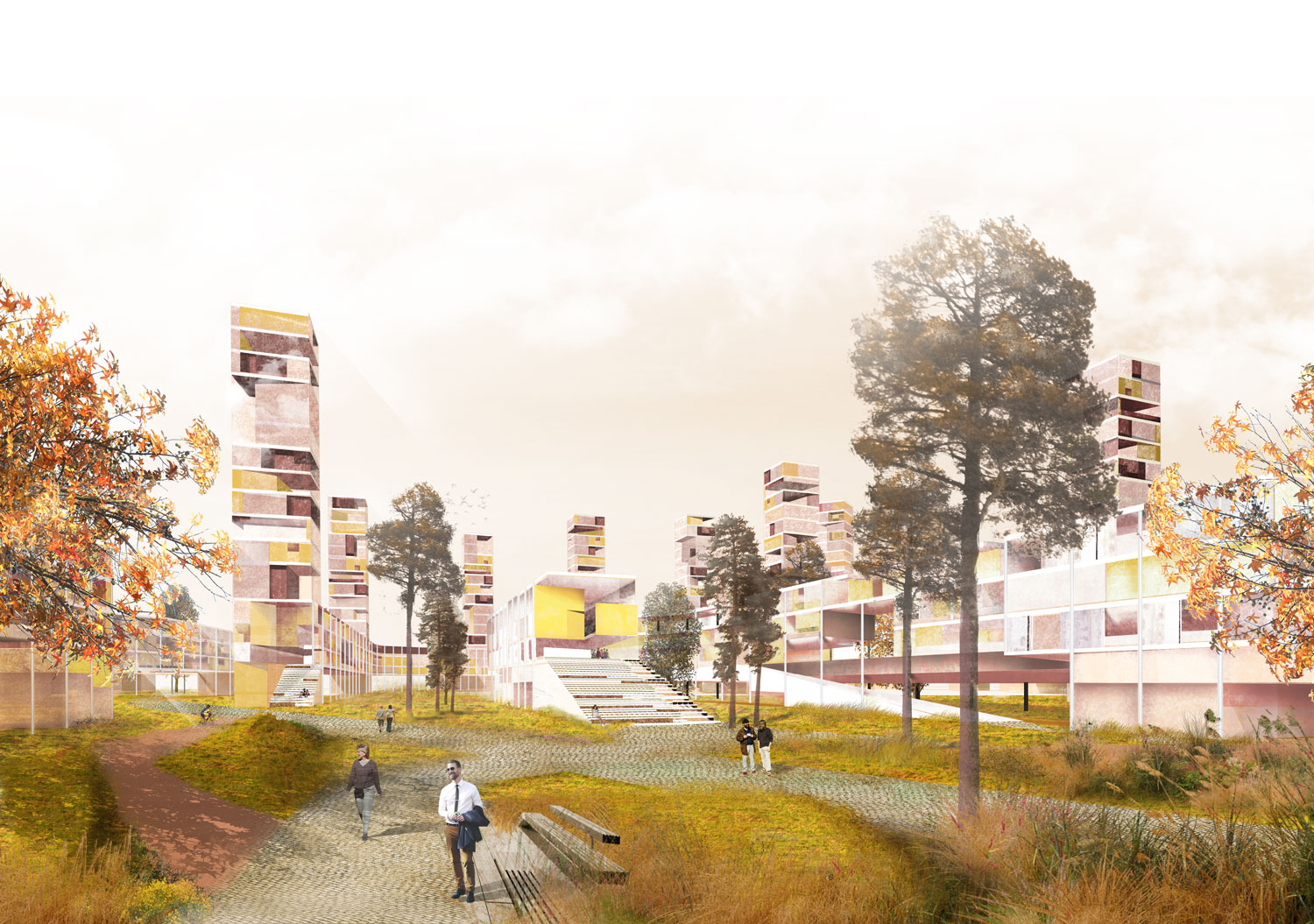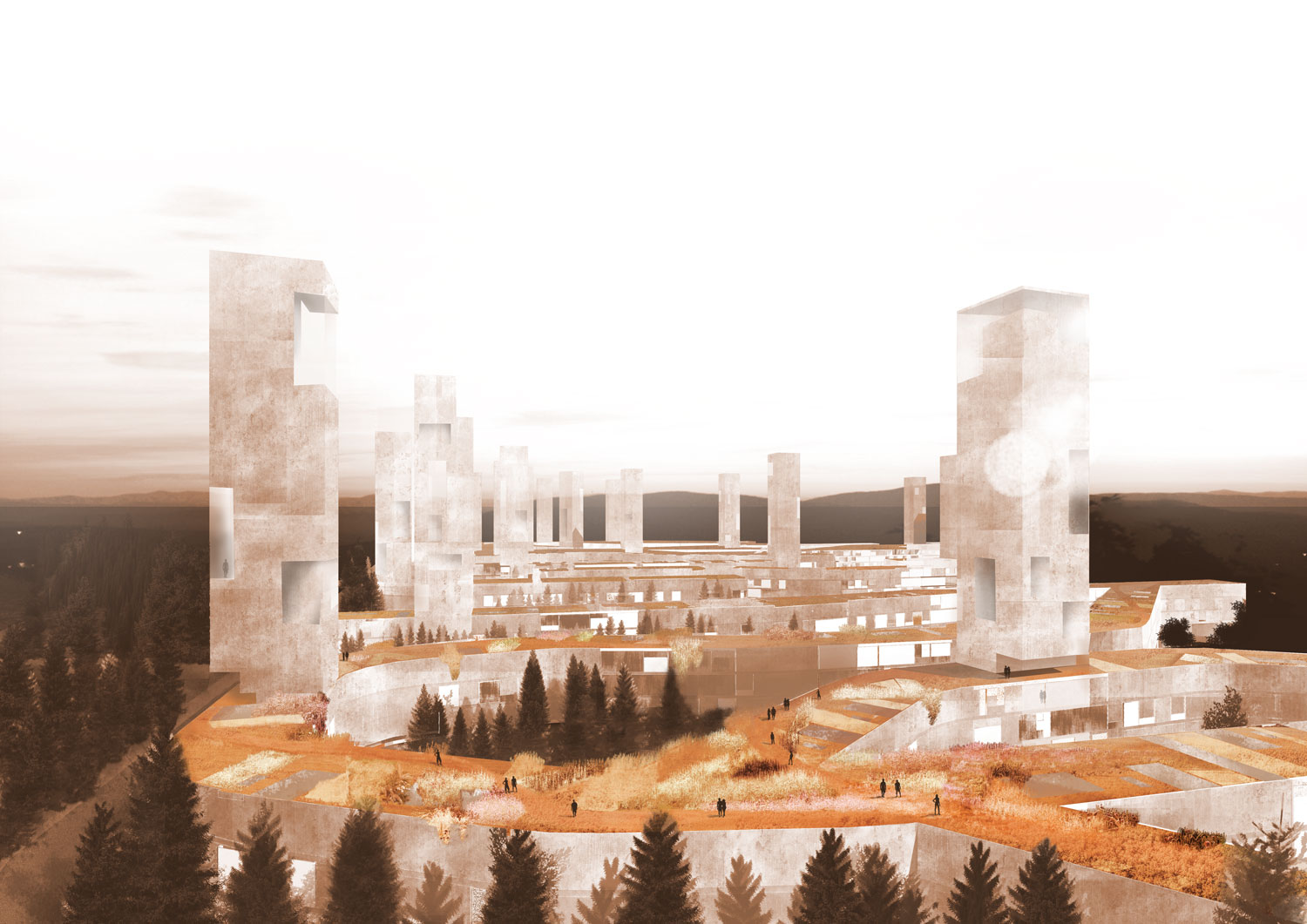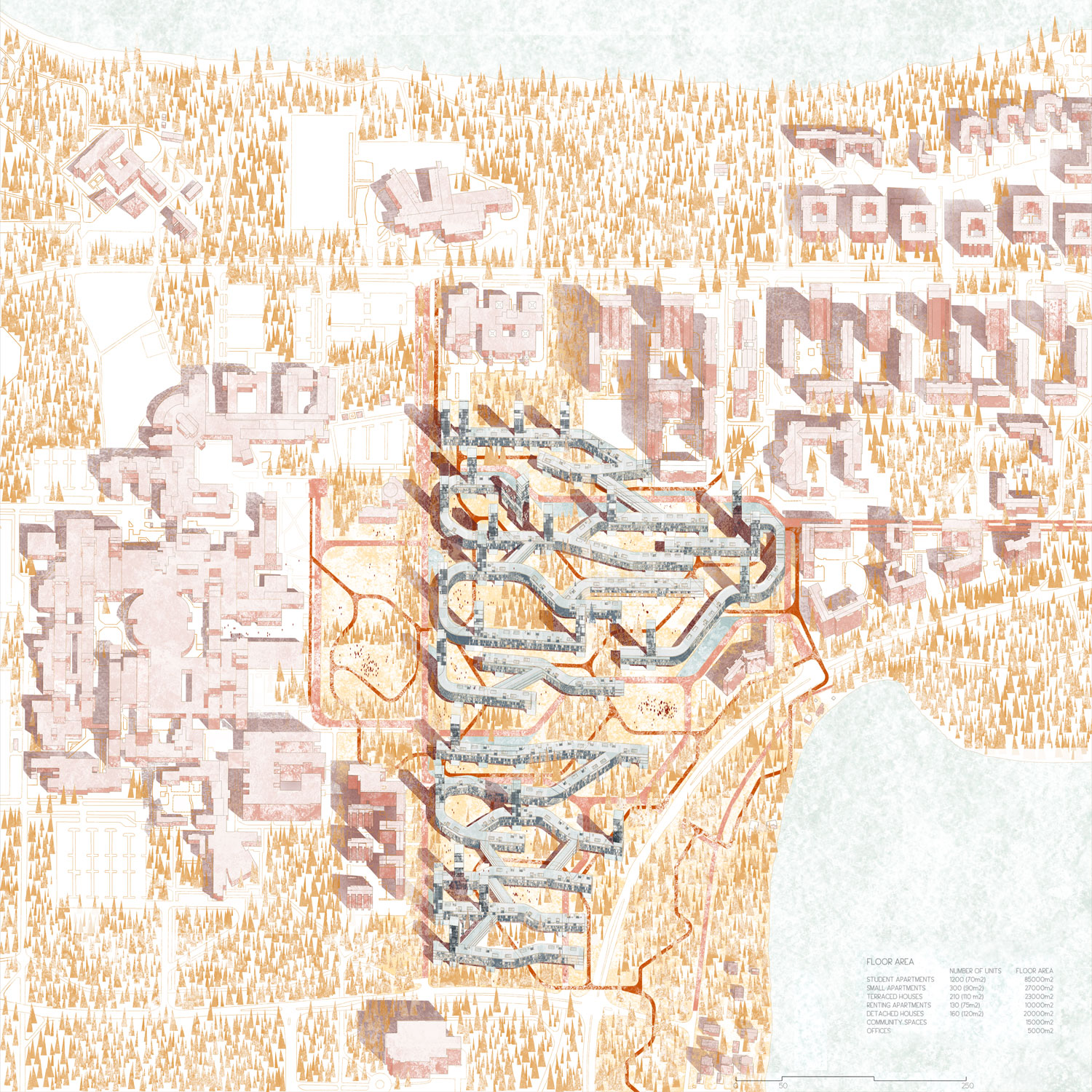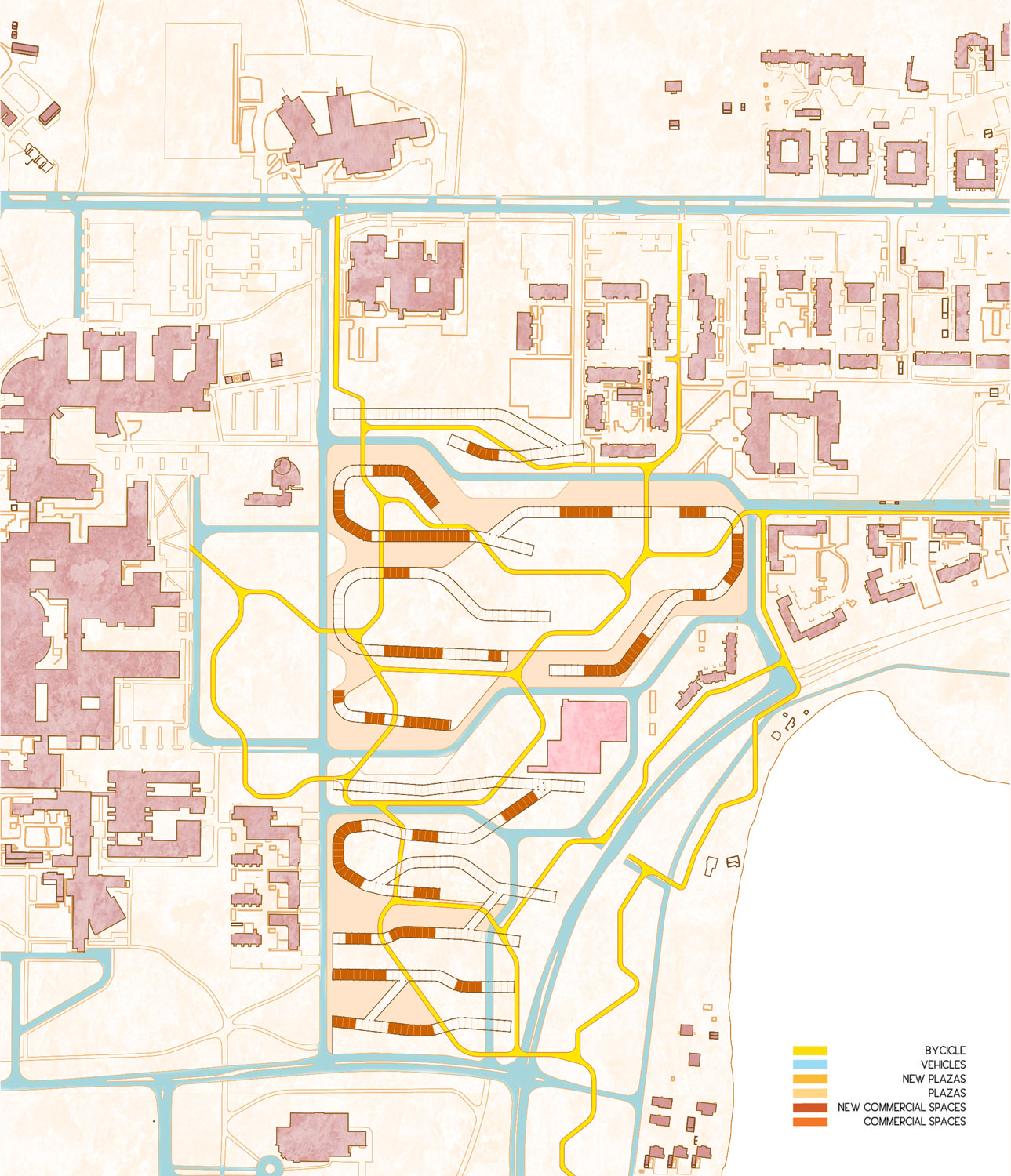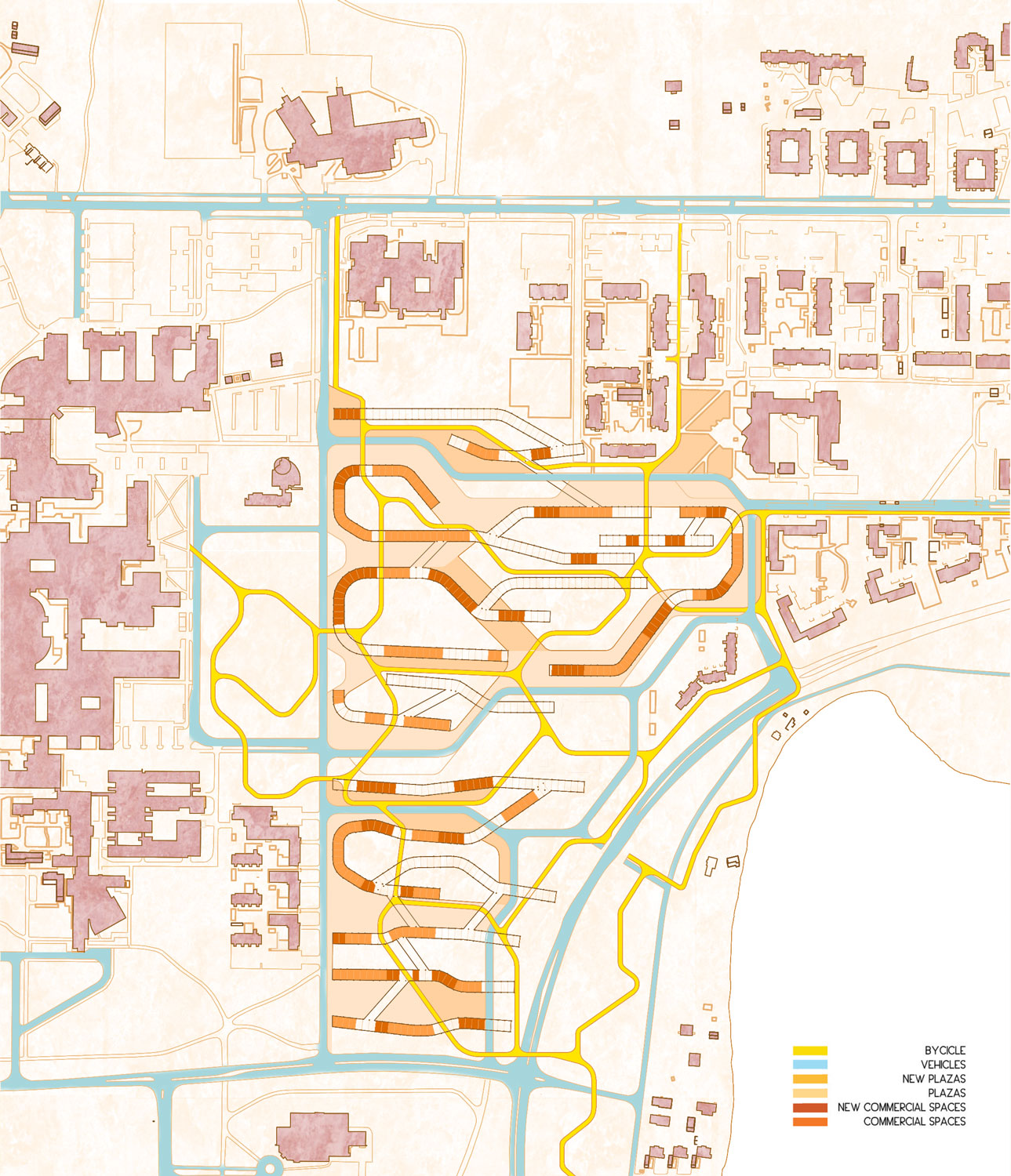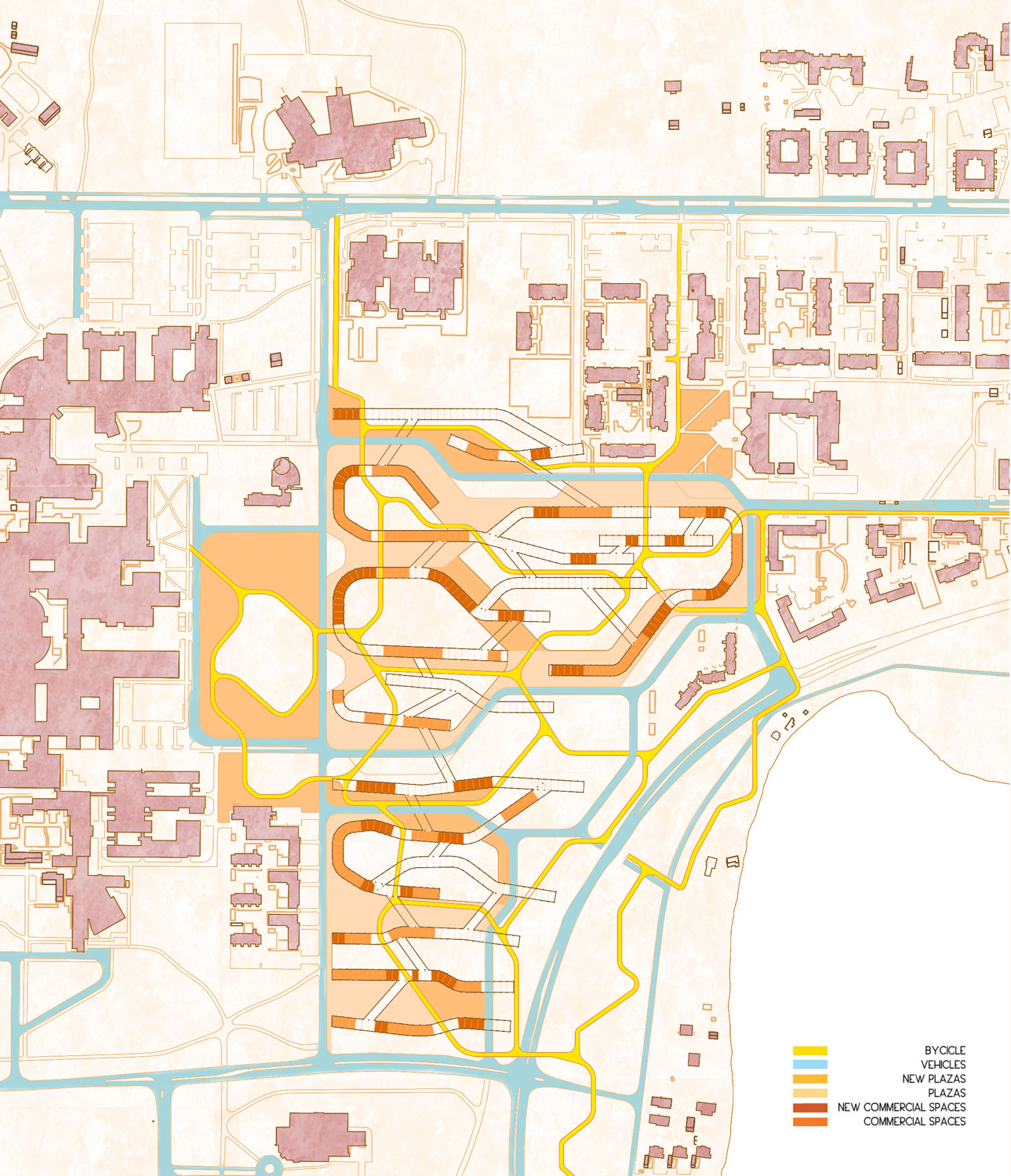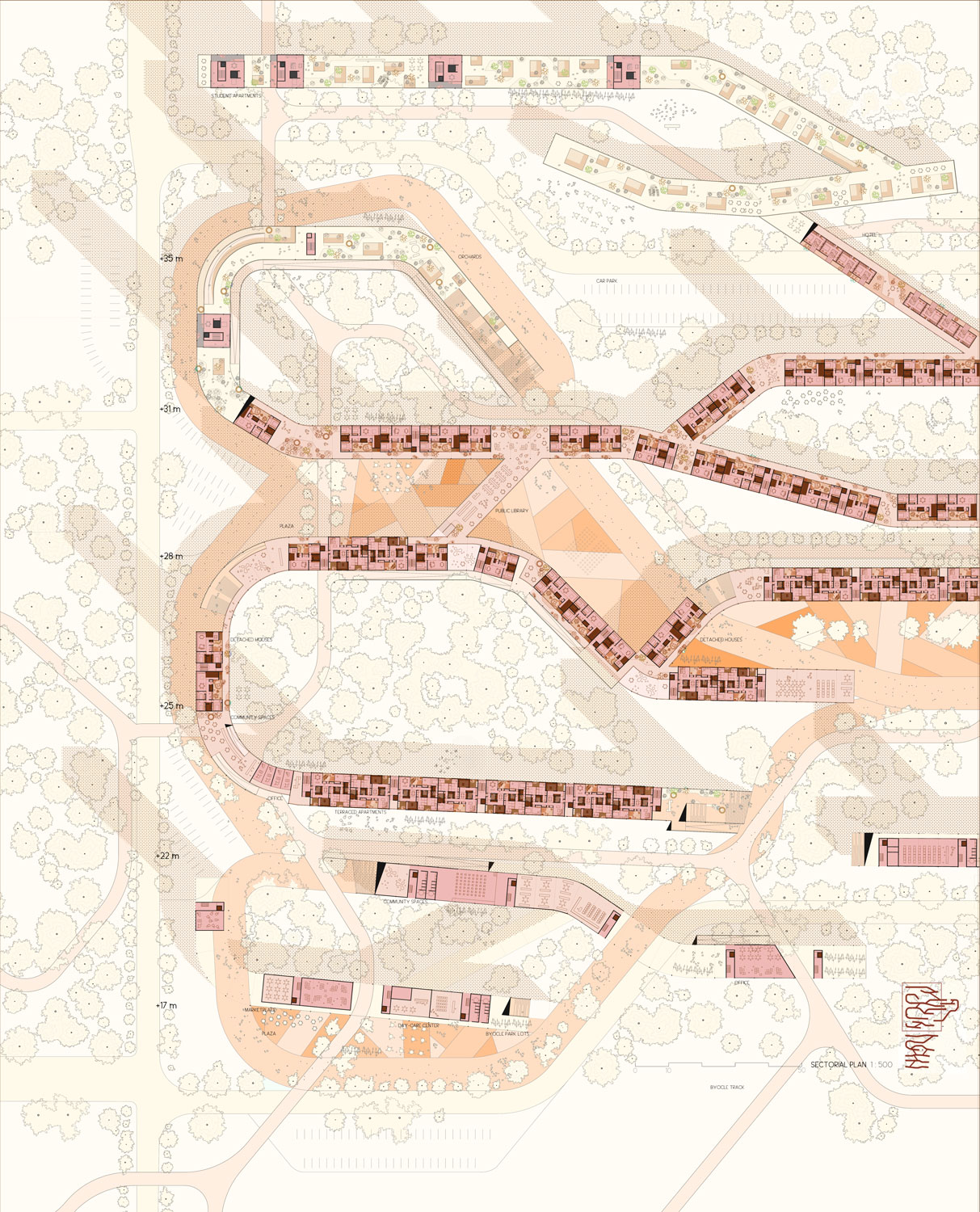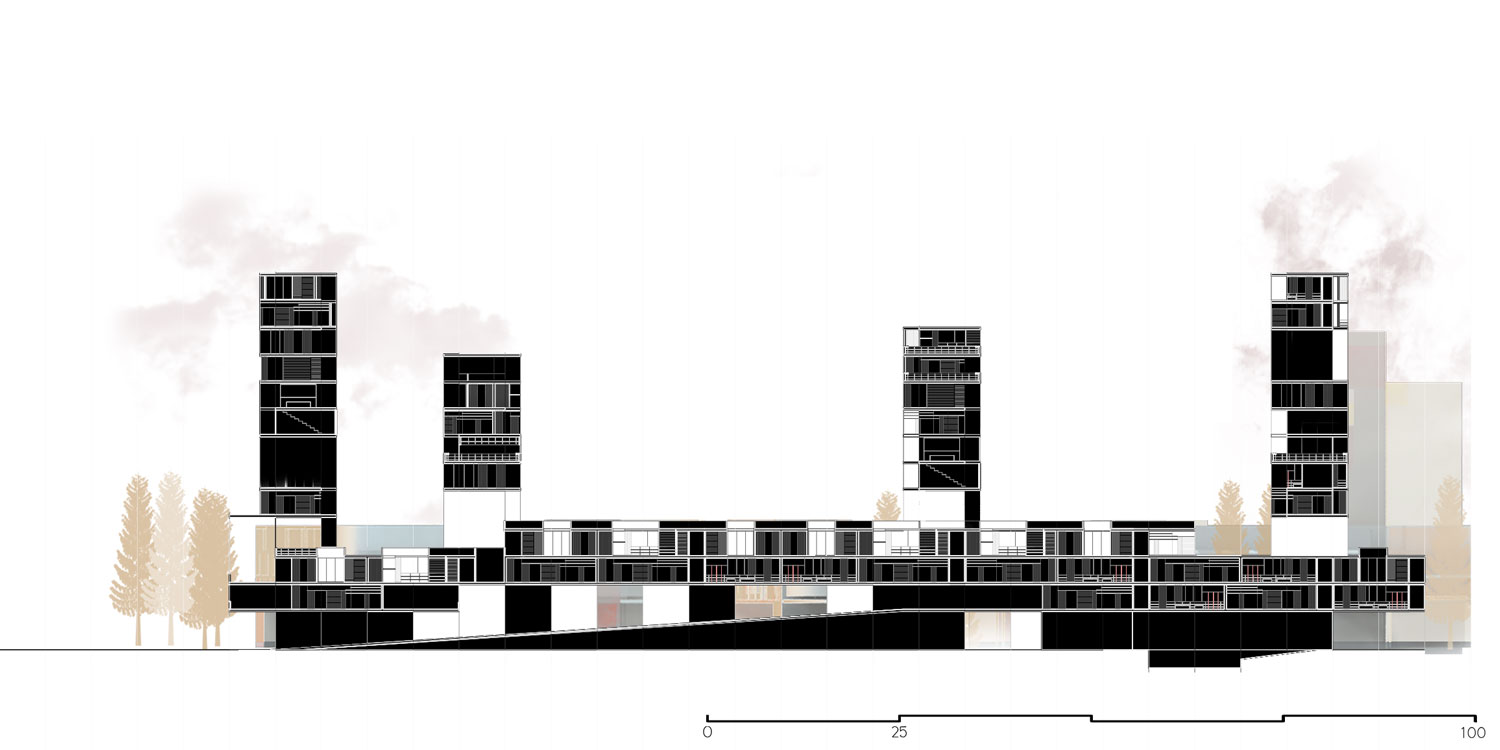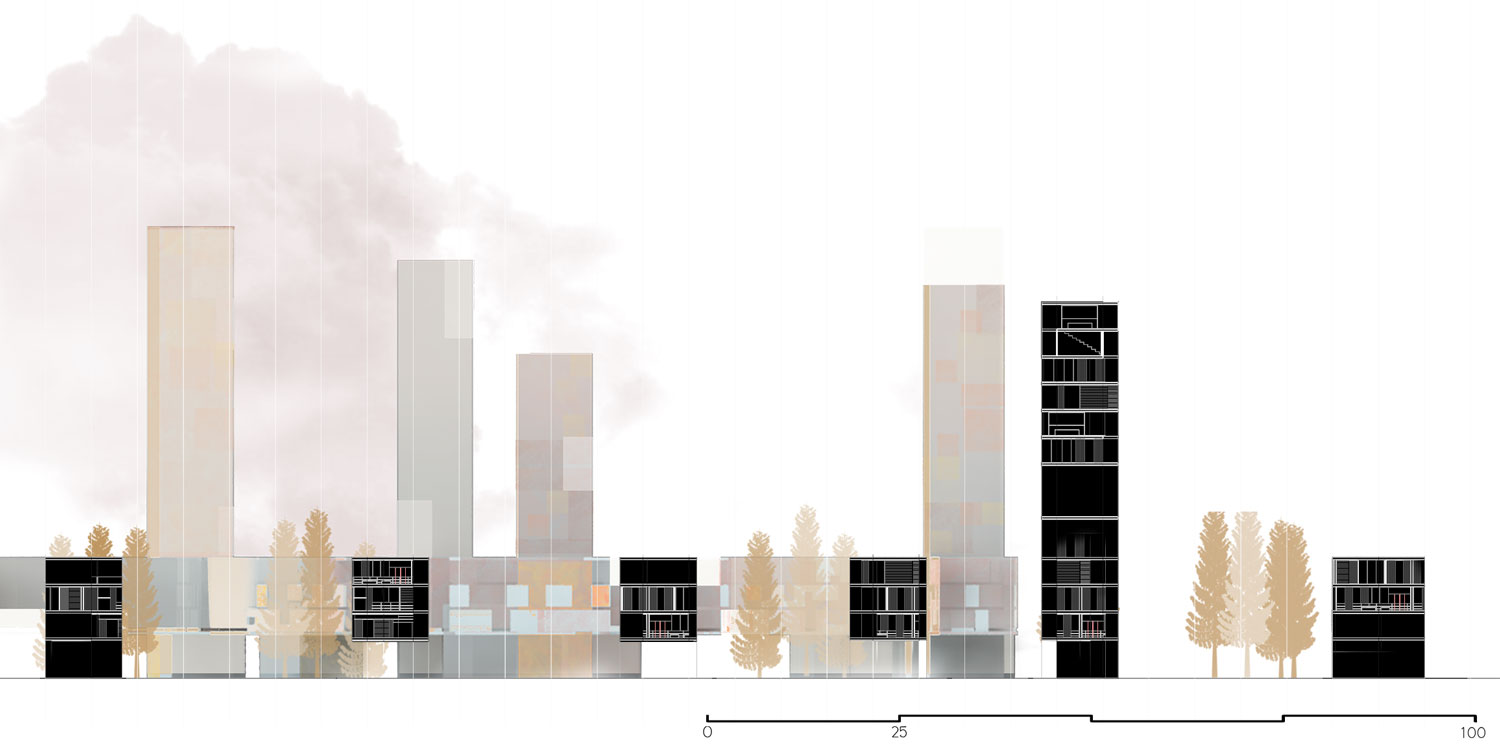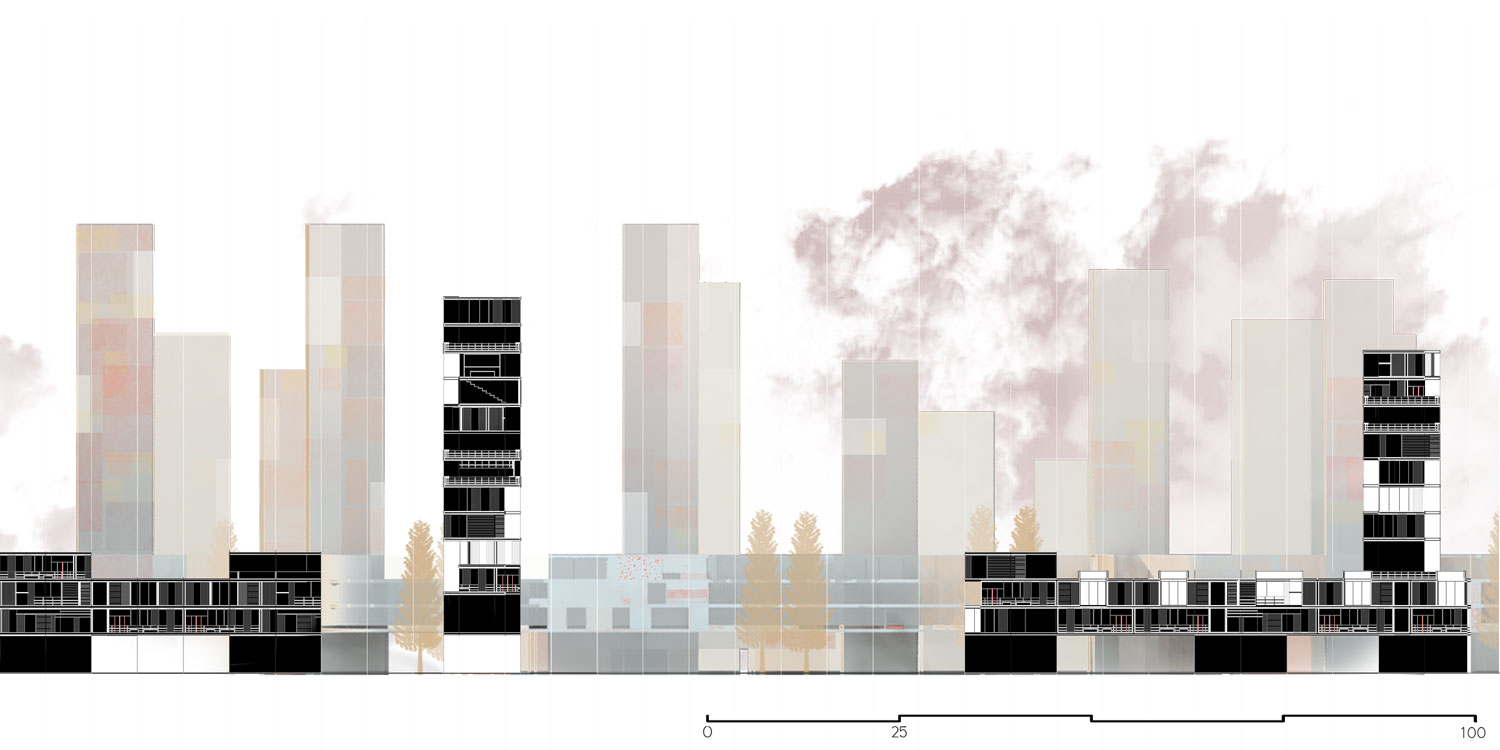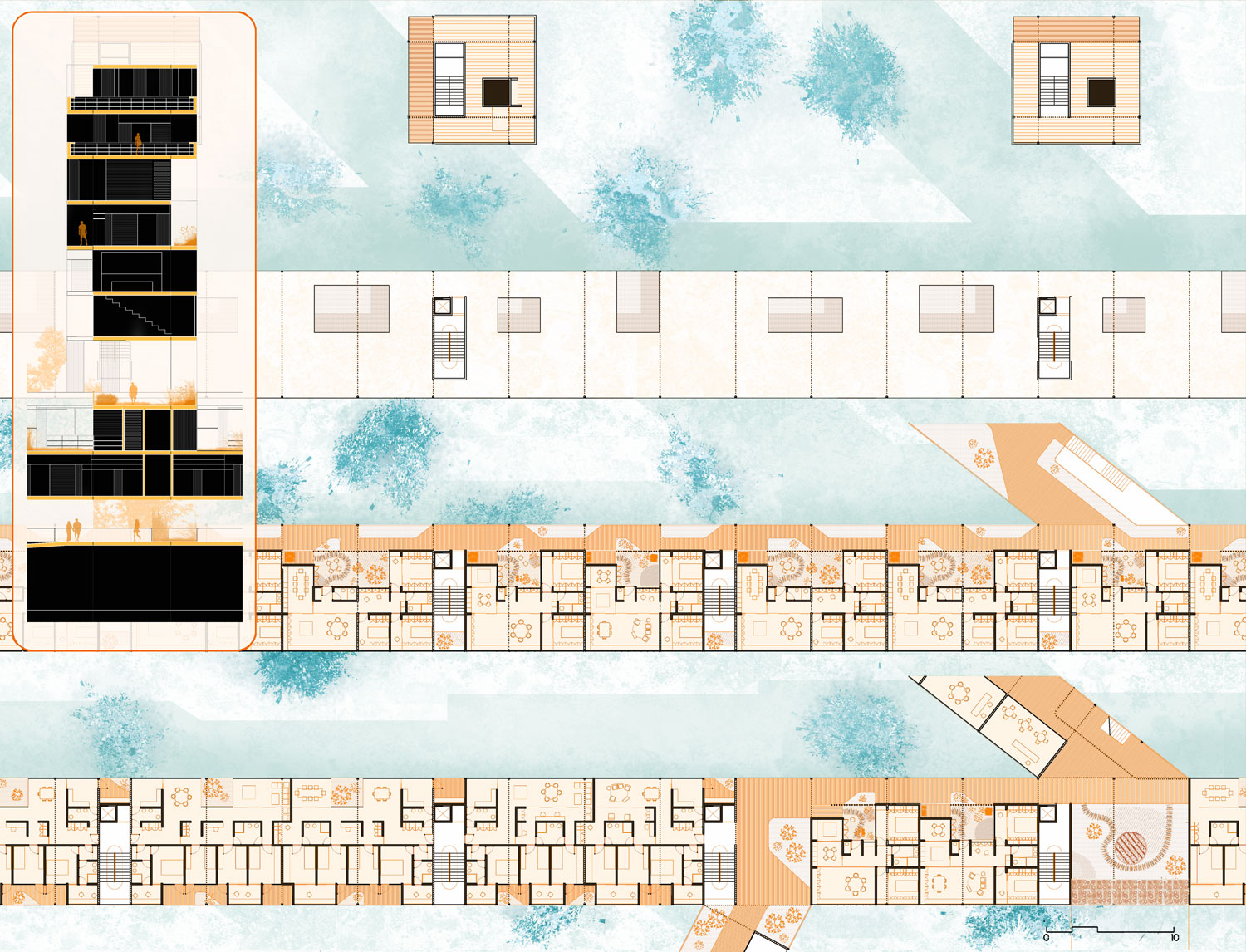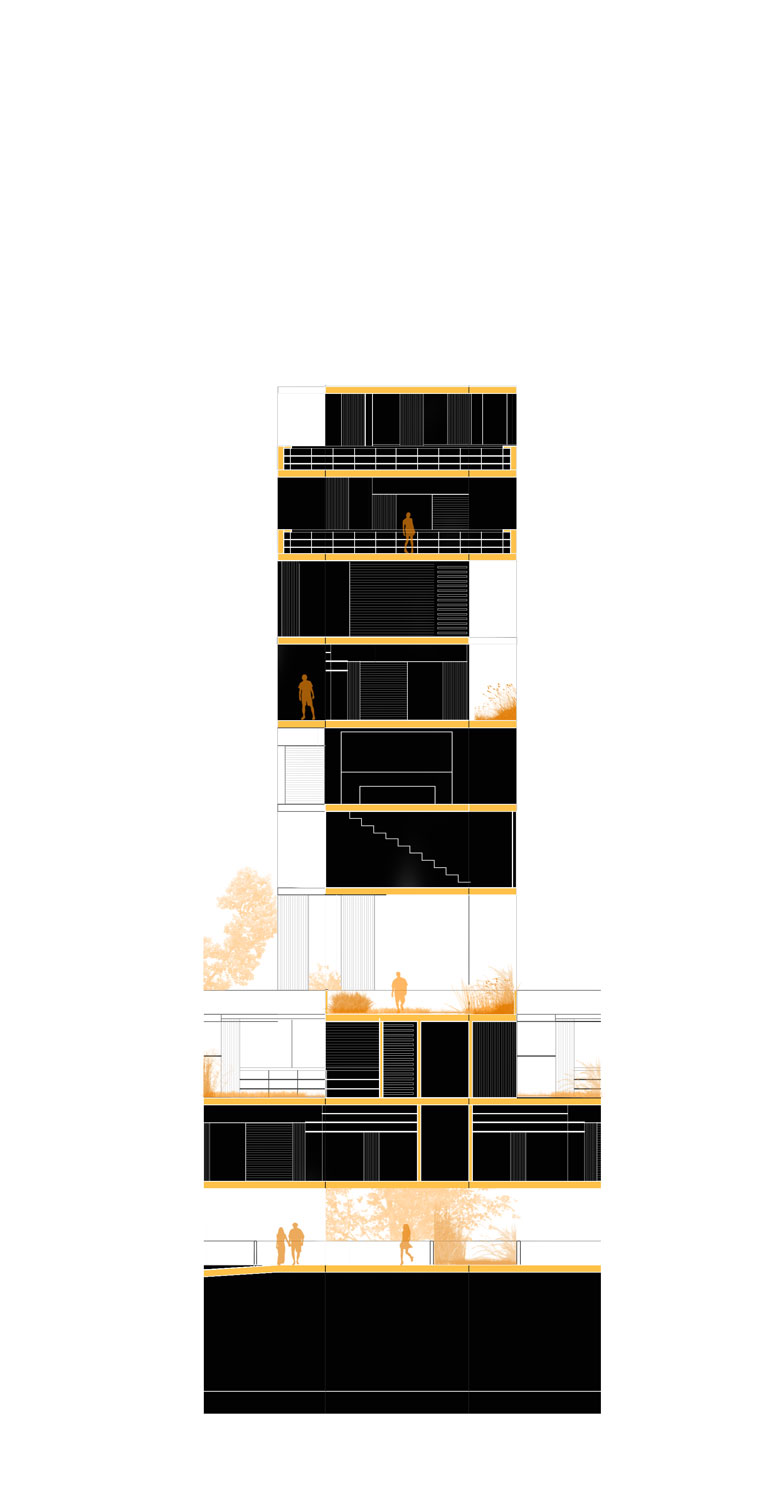2139-UBI-FI-2017
Client: Europan
Status: Competition (2017)
Clasification: 2 prize
Location: Oulu, Finland
Coordinates: 65.059628,25.4707373
Climate: Artic / polar, Cold
Material: Undefined
Environment: Urban
Visualizer: Studio
Scale: 185.000 ㎡ Extralarge
Types: Housing, Masterplan, Public space, Residential
The campus of the University of Oulu in Linnanmaa and Kaijonharju’s urban center are closely related. But the main relationship that stands out is the one existing between these two sectors and the natural environment that surrounds them. Especially with the Pyykösjärvi and Kuivasjärvi lakes.
However, the potential of this valuable environment is largely lost due to the disconnection caused by the highway and an obsolete transport network design.
We propose a housing system and a productive area capable of melting with the environment, recovering it for people, and above all, reconnecting all elements of great scenic value to create a natural network that can be enjoyed both by the neighbours of Oulu and by visitors.
Our proposal intends to achieve those goals with a number of sectors that combine domestic spaces with public spaces and productive areas. For the success of this proposal, it is essential to carry out an important reflection on the viable means of transport in the area.
Landscape and site
Each of the buildings is conceived as a unit for community life, however, our proposal seeks to create a global sense of neighbourhood by promoting a close relationship between all of them through a system of shared commerce, transportation and public spaces widely connected.
We look for a varied range of public spaces. However, the domestic spaces share common aesthetics, so that it is understood that the community is at the same time flexible and aware of its common goals. The total area to be built after completion of the three planned phases in the year 2040 will be of 185000 m2 and it will host about 4600 inhabitants.
Special attention has been given to the natural environment, maintaining the abundant vegetation in the area and adding new plantations. This is achieved through the elevation of a part of the commercial streets, which run through the trees and allow the large garden to run under them uninterruptedly.
This fact has great influence on the way we connect the transport routes. As a result, a complex and variable connection map are generated through the different stages of development. The majority of houses, destined to students, will be connected in a very direct way with the university, favoring the public transport and especially the use of the bicycle, The use of alternative transportation will allow removing some of the large parking areas now existing on the university campus, recovering those spaces for students.
Productive community
One of the main goals of the proposal is to create a stable community of neighbours, which generates work and well-being on its own and allows both the development of life within itself and a friendly connection with Oulu and especially with the nearest environment.
Offices and commercial spaces are mixed with the dwellings, allowing streets to appear within the buildings themselves. These spaces of the community cannot be conceived without maintaining a close relationship with nature, that’s the reason why they never lose contact with the forests of Oulu, and always maintain a close relationship with level zero.
The proposal also focuses on providing the necessary spaces so that those who once were students at the University of Oulu can end up forming their own families within the community they inhabited during their studies. That´s, in our view, the key for maintaining vitality, and the way to generate a community from individuals of all ages.
A new urban structure is built. That first development will serve as a basis for further buildings. The construction of 120000 m2 of the 185000 m2 takes place, maintaining those existing constructions that are considered key for the proper development of the community. The new transport network enables a series of new spaces for the parking of vehicles in the lower level of the buildings, allowing the old car parks to become public areas. In the east side of the highway, a series of hiking routes connected to the new neighbourhood are enabled through roads and cycle routes.
At the same time, 10000m2 of new commercial spaces are generated into the new buildings, replacing those existing today. There is also a new day-care centre on the ground floor as well as a series of common rooms for the neighbours, integrated into the blocks.
The new tram line that connecting the neighbourhood with Oulu goes through the new urban development and is integrated into it, allowing easy access to public transportation.
Self-supply: All new buildings use rainwater mainly as irrigation water for urban orchards and gardens generated on the roof of the building. This way the community provides Kaijonharju with organic vegetables.
The second phase of urban development includes the construction of 40000 m2 of new dwellings. It completes the replacement of old buildings (the old big supermarket stands out from the rest) for new commercial spaces and housing. There are also new ramps joining the blocks with the ground level and new buildings whose main function is to serve as a link between the blocks already built.
New student dwellings are available within the towers, that at the same time are able to define the new urban landscape of the neighbourhood.
The construction of the 185,000 m2 is completed with the new housing blocks. The new buildings end up linking the new urban development with the urban centre of Kaijonharju. Some of the former students occupy new, larger homes with big gardens designed to host entire families. The orchards begin to grow taller, and a new green mantle is integrated within the natural environment.
Building radiographies
Each constructed level has a wide variety of uses linked through circulation spaces with several degrees of privacy. New constructions are therefore mixed-use buildings that react to the conditions of the place at every level. For this reason, and facing the wide demand for community spaces, a number of public shared facilities are placed on the ground floor, as well as auxiliary car parks, protected from wind and rain by existing vegetation.
The different levels are linked in a wide range of points, allowing a global understanding of the neighbourhood as a productive community. As buildings ascend, domestic scale spaces are more common, reaching their peak in the upper levels. On the rooftops, houses are completed with a series of gardens that provide a higher level of privacy.
We propose a series of dwelling typologies whose price and equipment are variable, allowing a dynamic community with ample adaptability to take place.
